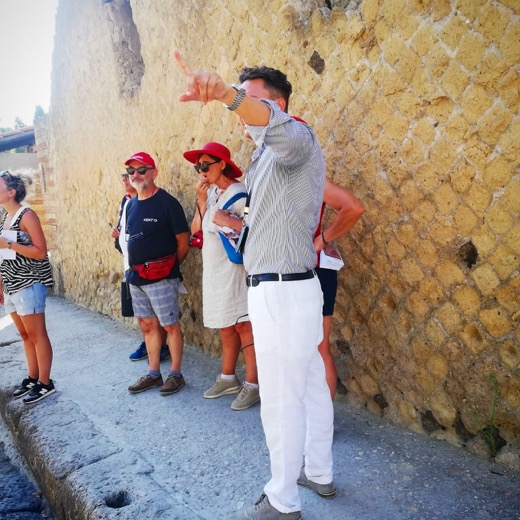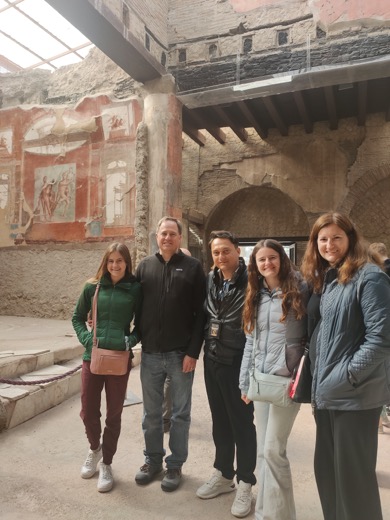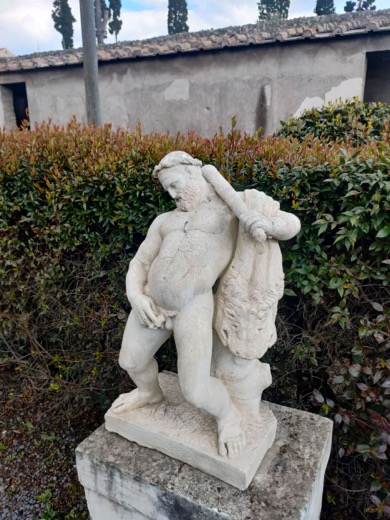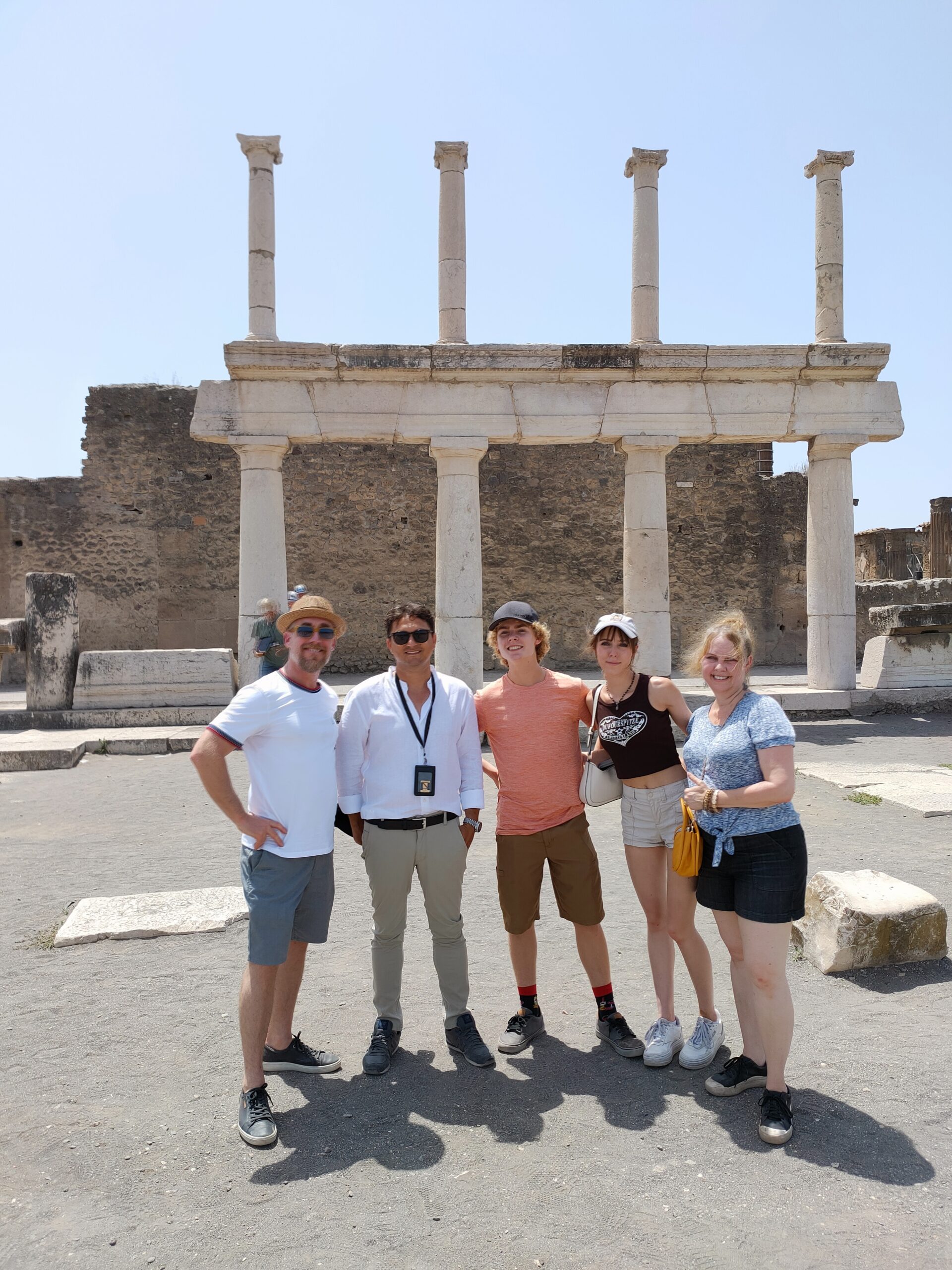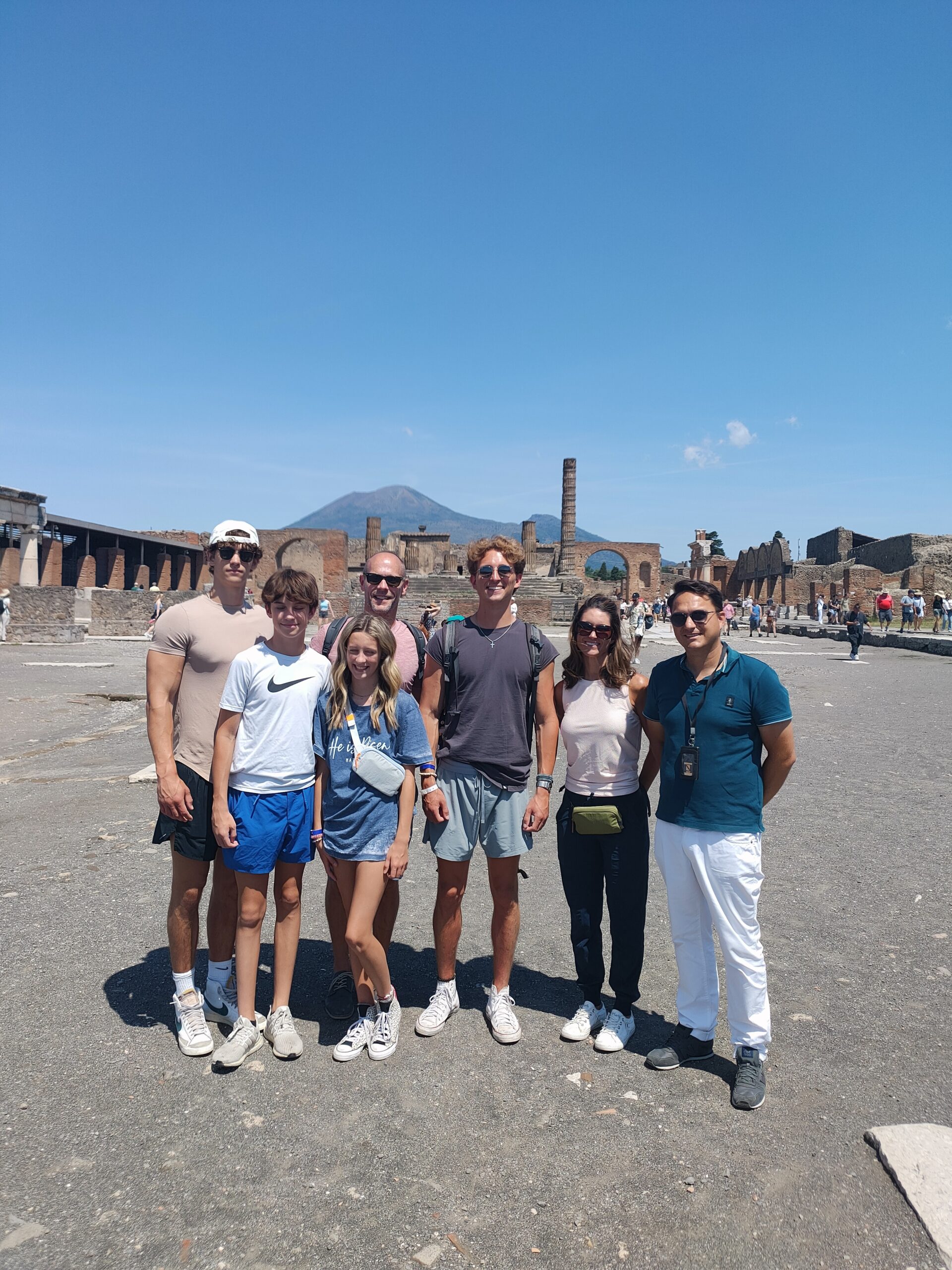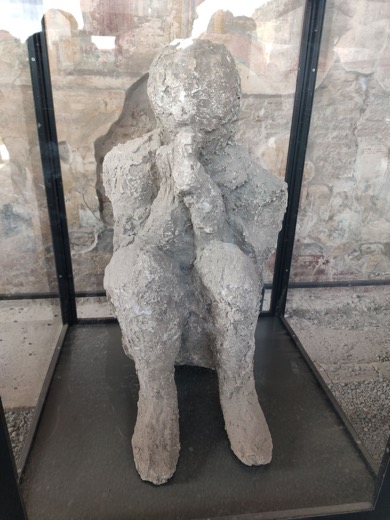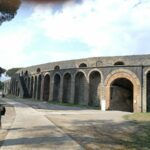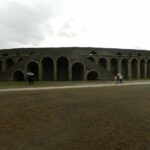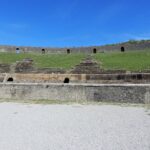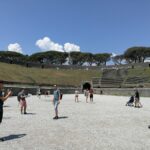The Amphitheater of Pompeii
The Amphitheater of Pompeii, the oldest among those that have survived intact to the present day, was built in the south-east corner of the city, in a peripheral area. The decentralized position of the building allowed easy accessibility from the area outside the city and allowed a good saving in production costs; half of the cavea of the structure does not rest on the arched construction typical of amphitheatres, but on the embankment behind the defensive walls, the so-called agger. Its construction dates back to 70 BC. and it was financed by two rich Pompeians: Gaius Quinctius Valgus and Marcus Porcius, local politicians who had also built the so-called Teatro Piccolo a few years earlier. The Amphitheater was an important meeting place for the whole community and illustrates well all the engineering applications achieved by the Romans in cement work: vaulted ambulatory of great height, buttresses with blind arches, masonry stairways and superimposed floors. The construction technique is opus quasi reticulatum. The Amphitheater had a capacity of approximately 20,000 spectators. After the eruption, the building, which remained visible in its upper part, was repeatedly looted by material recoverers who removed a large part of the steps.
Roman gladiators are iconic figures of ancient Rome, captivating the imagination with their feats of skill, bravery, and endurance. This research study aims to delve into the world of Roman gladiators, exploring their origins, training, weaponry, social status, and cultural significance. Through a comprehensive analysis of historical sources, archaeological evidence, and modern scholarship, this study seeks to shed light on the lives and experiences of these enigmatic figures from antiquity.The origins of gladiatorial combat can be traced back to ancient Etruria and Campania, where ritualistic combat was practiced as part of funeral rites and religious ceremonies. The Romans adopted and adapted these traditions, incorporating gladiatorial games into public spectacles known as munera, which were held to honor the dead and entertain the masses. Gladiators underwent rigorous training and conditioning to prepare for combat in the arena. They were typically recruited from slave populations, prisoners of war, and volunteers seeking fame and fortune. Training schools, known as ludus, provided instruction in combat techniques, weaponry, and tactics under the supervision of experienced trainers.
There were several types of gladiators, each with their own distinctive armor, weapons, and fighting style. These included the heavily armored Murmillo, the agile Thraex, the net-wielding Retiarius, and the exotic provocatively-clad Secutor, among others. Each type of gladiator had its strengths and weaknesses, and matchups were carefully orchestrated to ensure a balance of skill and spectacle in the arena.
Gladiatorial combat was a brutal and often deadly affair, with participants risking serious injury or death with each bout. While some gladiators achieved fame and fortune through their victories, many others perished in the arena, their lives cut short in the pursuit of glory and entertainment. Despite the risks, gladiators became celebrated figures in Roman society, admired for their courage, skill, and stoicism in the face of death.The legacy of Roman gladiators endures to this day, with their image and exploits immortalized in art, literature, and popular culture. Their stories continue to captivate audiences around the world, serving as a reminder of the complexities of ancient Roman society and the human experience. Through this research study, we gain a deeper understanding of the world of Roman gladiators, from their origins and training to their experiences in the arena and their enduring legacy. By exploring the lives and stories of these remarkable individuals, we enrich our understanding of ancient Rome and the human condition.


